Entry Database : PDB / ID : 1mjsTitle MH2 domain of transcriptional factor SMAD3 SMAD 3 Keywords / Function / homology Function Domain/homology Component
/ / / / / / / / / / / / / / / / / / / / / / / / / / / / / / / / / / / / / / / / / / / / / / / / / / / / / / / / / / / / / / / / / / / / / / / / / / / / / / / / / / / / / / / / / / / / / / / / / / / / / / / / / / / / / / / / / / / / / / / / / / / / / / / / / / / / / Biological species Homo sapiens (human)Method / / / Resolution : 1.91 Å Authors Qin, B.Y. / Lam, S.S. / Correia, J.J. / Lin, K. Journal : Genes Dev. / Year : 2002Title : Smad3 allostery links TGF-beta receptor kinase activation to transcriptional controlAuthors : Qin, B.Y. / Lam, S.S. / Correia, J.J. / Lin, K. History Deposition Aug 28, 2002 Deposition site / Processing site Revision 1.0 Oct 16, 2002 Provider / Type Revision 1.1 Apr 28, 2008 Group Revision 1.2 Jul 13, 2011 Group Revision 1.3 Feb 14, 2024 Group / Database references / Category / chem_comp_bond / database_2Item / _database_2.pdbx_database_accessionRevision 1.4 Apr 3, 2024 Group / Category
Show all Show less
 Open data
Open data Basic information
Basic information Components
Components Keywords
Keywords Function and homology information
Function and homology information Homo sapiens (human)
Homo sapiens (human) X-RAY DIFFRACTION /
X-RAY DIFFRACTION /  SYNCHROTRON /
SYNCHROTRON /  MOLECULAR REPLACEMENT / Resolution: 1.91 Å
MOLECULAR REPLACEMENT / Resolution: 1.91 Å  Authors
Authors Citation
Citation Journal: Genes Dev. / Year: 2002
Journal: Genes Dev. / Year: 2002 Structure visualization
Structure visualization Molmil
Molmil Jmol/JSmol
Jmol/JSmol Downloads & links
Downloads & links Download
Download 1mjs.cif.gz
1mjs.cif.gz PDBx/mmCIF format
PDBx/mmCIF format pdb1mjs.ent.gz
pdb1mjs.ent.gz PDB format
PDB format 1mjs.json.gz
1mjs.json.gz PDBx/mmJSON format
PDBx/mmJSON format Other downloads
Other downloads 1mjs_validation.pdf.gz
1mjs_validation.pdf.gz wwPDB validaton report
wwPDB validaton report 1mjs_full_validation.pdf.gz
1mjs_full_validation.pdf.gz 1mjs_validation.xml.gz
1mjs_validation.xml.gz 1mjs_validation.cif.gz
1mjs_validation.cif.gz https://data.pdbj.org/pub/pdb/validation_reports/mj/1mjs
https://data.pdbj.org/pub/pdb/validation_reports/mj/1mjs ftp://data.pdbj.org/pub/pdb/validation_reports/mj/1mjs
ftp://data.pdbj.org/pub/pdb/validation_reports/mj/1mjs Links
Links Assembly
Assembly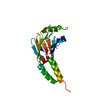
 Components
Components Homo sapiens (human) / Gene: SMAD3 / Production host:
Homo sapiens (human) / Gene: SMAD3 / Production host: 
 X-RAY DIFFRACTION / Number of used crystals: 1
X-RAY DIFFRACTION / Number of used crystals: 1  Sample preparation
Sample preparation SYNCHROTRON / Site:
SYNCHROTRON / Site:  NSLS
NSLS  / Beamline: X25 / Wavelength: 1.1 Å
/ Beamline: X25 / Wavelength: 1.1 Å Processing
Processing MOLECULAR REPLACEMENT
MOLECULAR REPLACEMENT Movie
Movie Controller
Controller




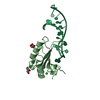
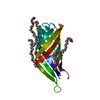
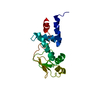
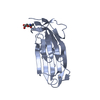
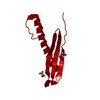
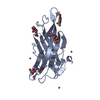
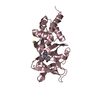
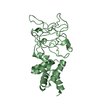


 PDBj
PDBj





















